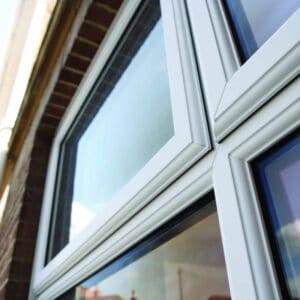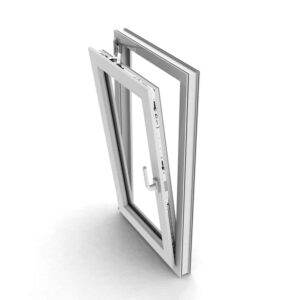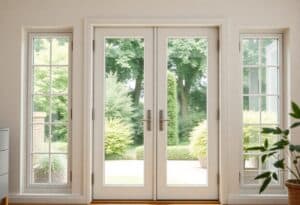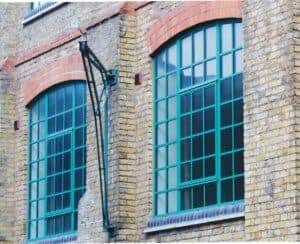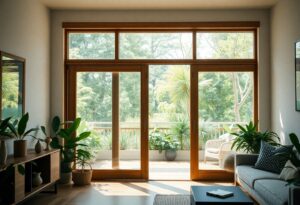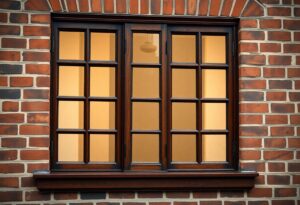There’s a fascinating journey that begins with CAD design and culminates in the installation of your high-quality R2 window and door units. In this process, you’ll discover how advanced precision manufacturing transforms your concepts into tangible products, enhancing both functionality and aesthetics in your spaces. From the initial design phase to the final touches of installation, every step is maximised for efficiency and accuracy. Dive deeper into how this technology works by exploring From Digital to Physical: The Use of CAD in Machining.

Understanding CAD Design
For anyone involved in the manufacturing sector, understanding CAD design is imperative. Computer-Aided Design (CAD) provides a digital platform that allows you to create precise 2D and 3D drawings of your window and door units. This not only streamlines the design process but also ensures accuracy from the outset, ultimately leading to enhanced quality in the final product.
The Role of CAD in Precision Manufacturing
Role of CAD in precision manufacturing cannot be overstated. It serves as the backbone of the design process, enabling you to visualise your projects in detail. Moreover, CAD systems facilitate easy modifications and iterations, allowing you to adapt to changes instantly without compromising on design integrity.
Benefits of CAD Design in Window & Door Units
At the forefront of modern manufacturing, CAD design offers numerous benefits in creating window and door units. It enhances detail and accuracy, thus reducing the likelihood of errors during production. Furthermore, CAD allows for better communication between stakeholders, ensuring that your vision aligns perfectly with the final installation.
It is vital to acknowledge that the implementation of CAD in window and door unit design significantly streamlines your workflow. By providing a clear visual representation of your concepts, you can identify potential issues before they arise, minimising expensive mistakes. The software’s ability to perform simulations also means you can assess performance metrics like durability and energy efficiency early in the process, ultimately leading to smarter, more informed decisions. This not only enhances product quality but also boosts customer satisfaction and confidence in your offerings.
Materials Used in R2 Window & Door Units
If you are considering R2 window and door units, you’ll discover a range of materials that enhance both aesthetics and functionality. They often incorporate high-performance glazing, durable frames, and advanced seals to ensure energy efficiency and longevity. For a comprehensive overview of how these materials integrate into design, explore Hot Door – CADtools.
Selection Criteria for Materials
Door materials are selected based on factors such as thermal insulation, weather resistance, and overall strength. Your choice should align with the specific requirements of your project, balancing aesthetic appeal and structural integrity.
Impact on Durability and Performance
Below the surface of R2 window and door units lies a complex interplay of material properties that significantly affects their durability and performance. The choice of materials can greatly influence how well your units withstand environmental stressors, including extreme weather conditions and wear over time.
Selection of the right materials ensures *maximum insulation*, *minimum maintenance*, and *enhanced security*. For instance, using high-grade aluminium can lead to *greater resistance to corrosion*, while advanced glazing technology will improve *thermal efficiency*, ultimately resulting in *lower energy costs*. Your considerations should include not just the immediate benefits but also the long-term *return on investment* that durable materials promise.
Advanced Manufacturing Techniques
You will benefit from understanding advanced manufacturing techniques that enhance the efficiency and precision of R2 window and door units. These techniques include:
- Computer-Aided Design (CAD) Integration
- CNC Machining
- 3D Printing Technology
- Robotics and Automation
- Quality Control Systems
| Technique | Description |
|---|---|
| CNC Machining | Automated cutting process ensuring high precision |
| 3D Printing | Layered manufacturing for complex designs |
| Robotics | Automated systems for increased efficiency |
CNC Machining Processes
Any manufacturing process involving CNC machining guarantees unparalleled precision and repeatability. By using computer-controlled equipment, you can achieve exact specifications for your window and door units, resulting in superior quality and performance.
Automation in Production
For optimal production efficiency, automation in manufacturing is important. Automated systems streamline workflows, reduce human error, and significantly increase output.
The adoption of automation in production not only enhances your operational efficiency but also ensures a higher level of safety for your workforce. By employing systems such as robotic arms and conveyor belts, you can minimise human intervention in potentially hazardous tasks. Furthermore, automation allows for consistent quality control, reducing material waste and maximising resources. As you implement these advanced techniques, you will find that your manufacturing capabilities expand, paving the way for innovation and growth in your business.
Quality Control in Manufacturing
All aspects of quality control are vital in ensuring that R2 window and door units meet industry expectations. You should be aware that rigorous quality management processes are meticulously implemented throughout the manufacturing stage to guarantee durability, performance, and aesthetic appeal, ultimately ensuring customer satisfaction.
Standards and Regulations
Among the various aspects to consider, adhering to national and international standards is paramount. These regulations establish the benchmarks for safety, energy efficiency, and performance, thereby providing you with assurance that your R2 units are well within the required guidelines.
Testing Methods for R2 Units
About the testing methods, several procedures are employed to rigorously assess the performance of R2 units. You can expect that testing focuses on aspects such as energy efficiency, weather resistance, and structural integrity, ensuring that each unit upholds its promises.
Methods used for testing R2 units include air and water infiltration tests, structural load tests, and thermal performance evaluations. By employing these techniques, you can be assured that the units not only meet your performance expectations but also adhere to high standards of safety and reliability. Each test highlights the importance of identifying potential weaknesses in design and material, elevating the overall quality of the final installation.

Installation Processes
Many aspects contribute to the successful installation of R2 window and door units, ensuring they function optimally and enhance the aesthetics of your property. From proper measurement to choice of tools, each stage is vital. Thorough planning and execution in the installation process can prevent future complications, ensuring longevity and performance of your investment.
Pre-Installation Considerations
Among the key elements to contemplate before installation are measuring the opening accurately, ensuring that the frame is level, and selecting suitable weatherproofing materials. Assessing these factors can save you time and resources in the long run, while also guaranteeing a proper fit and function of your window and door units.
Best Practices for Installation
Against common pitfalls, adhering to best practices during installation can significantly improve the overall outcome. This involves using the right tools, following manufacturer guidelines, and ensuring all units are properly sealed to prevent air and water leaks. You should also take your time to double-check measurements before making any cuts.
Plus, installing your R2 window and door units with care and precision can enhance both aesthetics and performance. Make sure to employ a level to ensure that each unit sits correctly, as this will help avoid future issues such as water damage and drafts. Adequately sealing your installations with the proper materials will contribute to your property’s energy efficiency, ultimately providing substantial savings on energy bills. Don’t overlook safety; it is vital to use personal protective equipment, as improper handling can lead to injuries. Following these guidelines will lead to a successful installation that meets your expectations.
Maintenance and Longevity
To ensure the longevity and optimal performance of your R2 window and door units, regular maintenance is important. Routine inspections and appropriate care will not only enhance their aesthetic appeal but also safeguard against potential issues, maximising their lifespan. By following maintenance guidelines, you can enjoy the benefits of your investment for many years to come.
Routine Maintenance Guidelines
Above all, ensure you conduct regular inspections of your windows and doors. Clean the frames and glass periodically, check for wear and tear on seals, and lubricate moving components to maintain their function. Prevention is key, so create a schedule for these tasks to keep your units in peak condition.
Addressing Common Issues
Maintenance is also about being proactive in addressing any common issues that may arise. Early detection of problems such as drafts, condensation, or difficulties in operation can save you significant time and money in the long run.
It is important to inspect your R2 window and door units for drafts or condensation, as these can indicate seal deterioration or poor installation. If you encounter difficulty in operation, check the hardware for dirt or misalignment that may impede performance. Addressing these issues promptly not only enhances your comfort but also ensures energy efficiency and prolongs the lifespan of your units. Maintaining vigilance will help you achieve lasting results and create a more pleasant living environment.
Summing up
With this in mind, you can see that precision manufacturing is imperative for successfully bringing your CAD designs to life in R2 window and door units. By understanding the intricacies of the entire process—from the initial design to the final installation—you can ensure a high-quality outcome that meets your specific needs. Emphasising accuracy at each step allows your projects to achieve enhanced durability and performance, giving you confidence in the longevity of your installations.
FAQ
Q: What is the role of CAD design in precision manufacturing for R2 window and door units?
A: CAD design plays a pivotal role in precision manufacturing by providing detailed and accurate digital representations of window and door units. This allows for precise measurements and specifications that are important for the production process. Through CAD, manufacturers can easily modify designs, ensuring that any custom requirements or client specifications are seamlessly integrated into the final product, ultimately enhancing the fit and finish of the installations.
Q: How does the precision manufacturing process ensure the quality of R2 window and door units?
A: The precision manufacturing process entails a series of stringent quality control measures at various stages, beginning with the CAD design and continuing through to the final installation. Advanced machinery and techniques are employed to ensure that each part is crafted to exact specifications. Regular inspections and testing occur throughout the manufacturing process to confirm that every unit meets high-quality standards and durability benchmarks before it is installed.
Q: What are the advantages of using precision manufacturing techniques for R2 window and door units?
A: The advantages of utilising precision manufacturing techniques include enhanced accuracy, improved energy efficiency, and customised design options. Precision manufacturing allows for more consistent production, reducing waste and ensuring that each unit fits perfectly within the designated space. Additionally, these techniques can contribute to better insulation properties, leading to potential energy savings for homeowners.
Q: Can the designs of R2 window and door units be customised through the CAD process?
A: Yes, the CAD process allows for significant customisation of R2 window and door unit designs. Customers can collaborate with designers to adjust dimensions, shapes, colours, and finishes to suit their architectural vision and functional needs. This level of customisation ensures that the final product not only meets aesthetic preferences but also aligns with the specific requirements of the installation site.
Q: What steps are involved from CAD design to the final installation of R2 window and door units?
A: The process begins with initial consultation and CAD design, where customer specifications and requirements are gathered. Once the design is approved, the precision manufacturing process entails fabrication, where materials are cut, shaped, and assembled according to the CAD specifications. After manufacturing, quality control checks are performed before the units are prepared for delivery. Finally, professional installation is carried out, ensuring that each unit is fitted properly and functions as intended, completing the process from design to installation.

